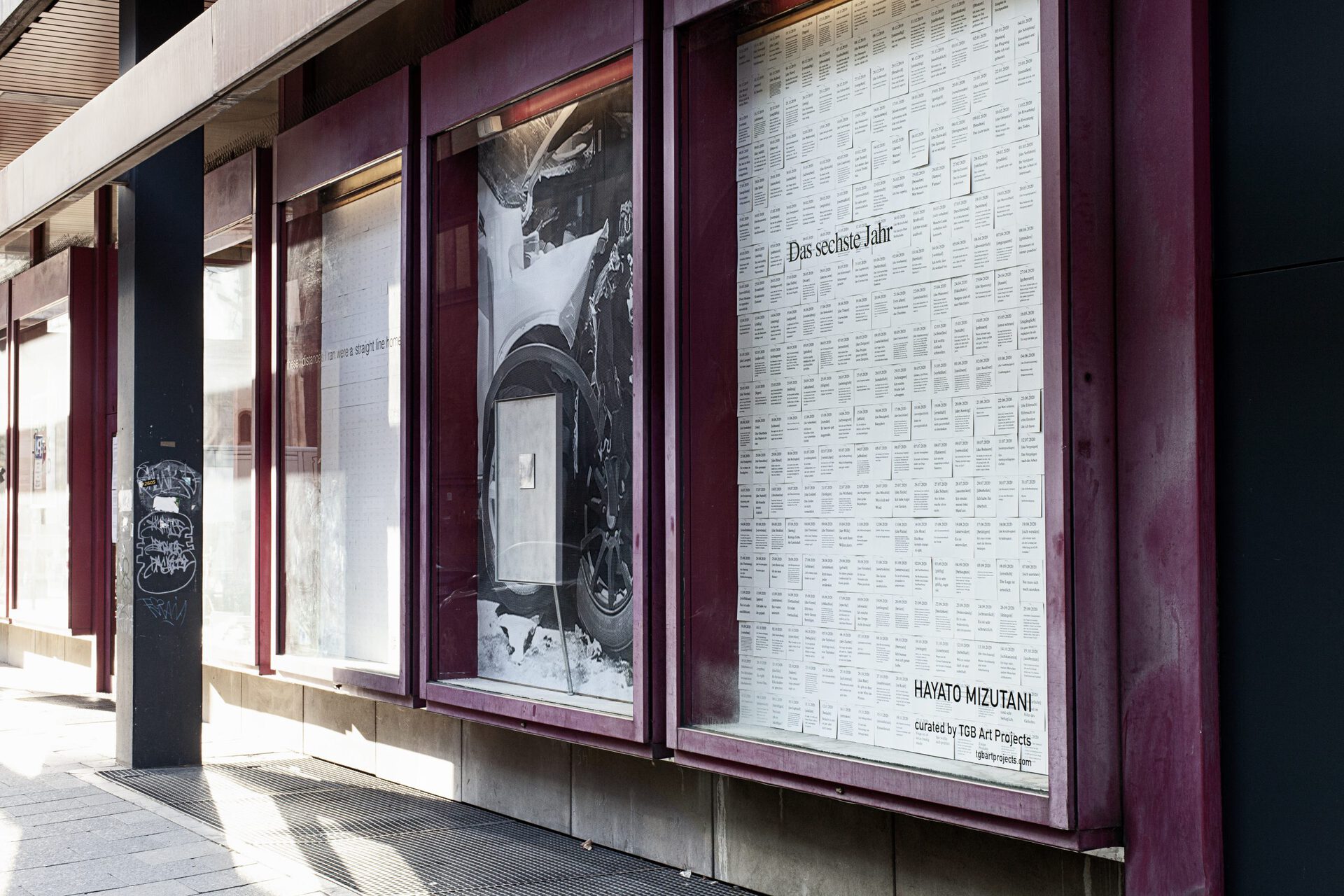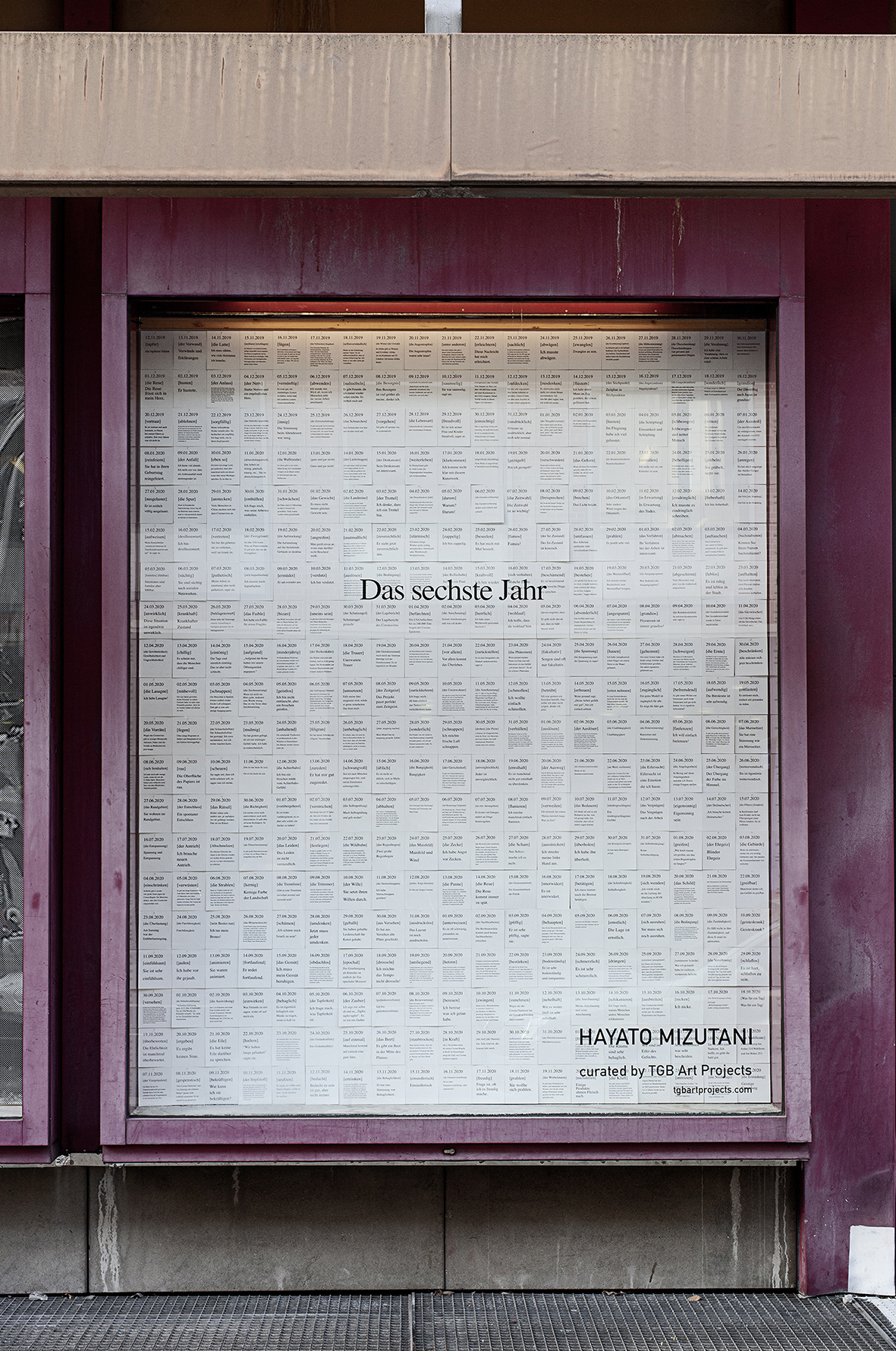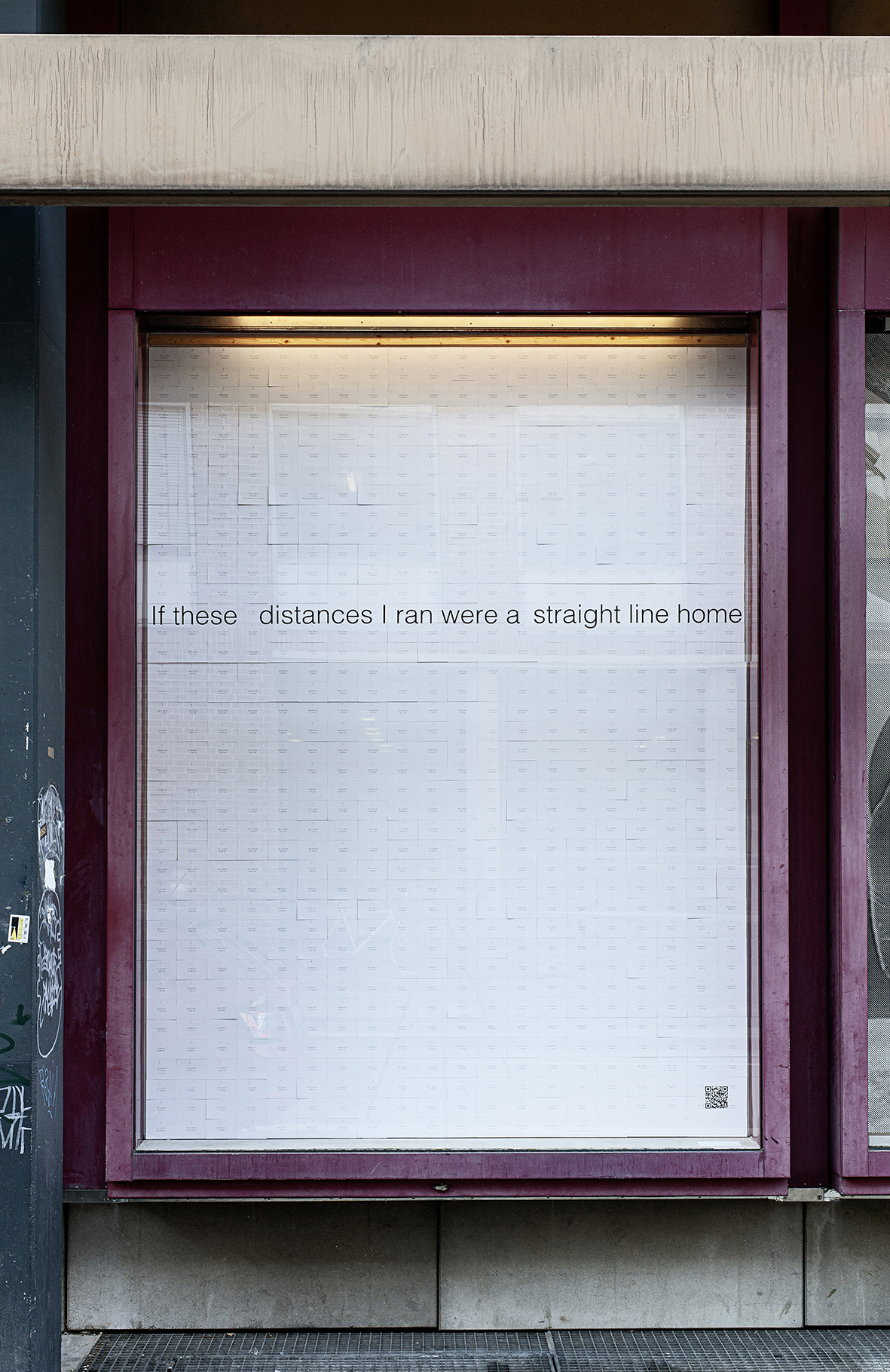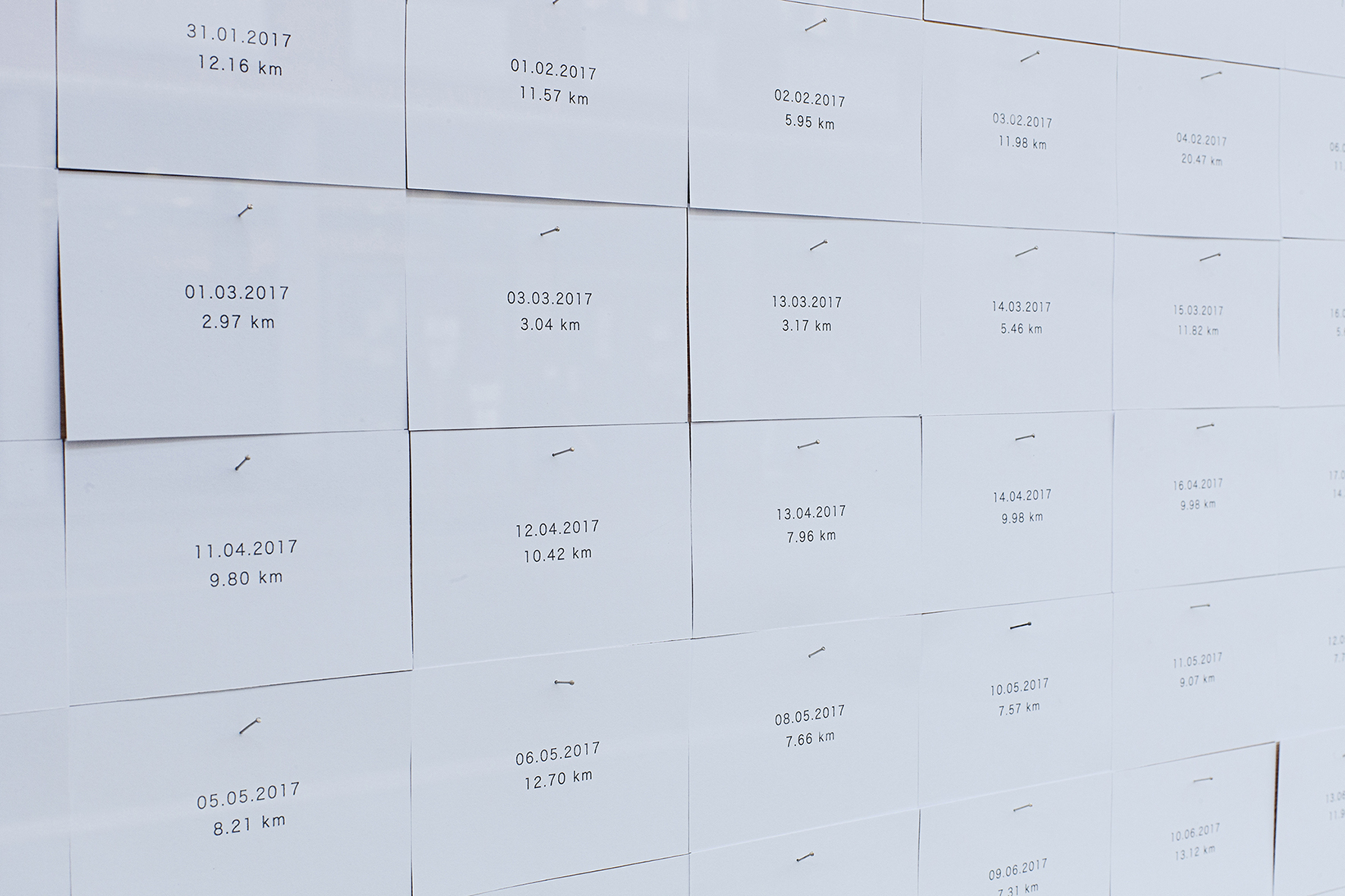Archive
2021
KubaParis
TRANSLATING REALITIES






Location
TGB Art ProjectsDate
21.03 –16.04.2021Curator
Tinatin Ghughunishvili-Brück/ Jaemin LeePhotography
Verena HäglerSubheadline
TGB Art Projects hosted by Lost Weekend Gallery Munich, March/April 2021 Installation TRANSLATING REALITIES by Julia Emslander and Hayato Mizutani explores the question of different artistic "strategies" of translating realities.Text
TRANSLATING REALITIES
TGB Art Projects hosted by Lost Weekend Gallery
Munich, March/April 2021
Installations by Julia Emslander and Hayato Mizutani
Curated by Tinatin Ghughunishvili-Brück
A four-part installation featuring the works of artists Julia Emslander and Hayato Mizutani was showed in the showcases of the Lost Weekend Gallery from 22 March to 17 April 2021.
The exhibition explores the question of different artistic "strategies" of translating reality, both in the formal possibilities of different media and in the subjective-philosophical interpretation of a nonjudgmental grasp of the given potentials of reality and fiction, such as language, material, association and others.
Even if the confrontation with the respective pictorial and conceptual objects already presupposes a decision, these two, at first sight very different artistic positions, are united by a tendency towards transformation, which can neither be assigned to affirmation nor to social criticism and which, in their almost documentary and at the same time ambiguous character, seem all the more profound.
The inclusion of the recipient's viewing point, which carries the broad spectrum from the optical perspective to the imprints of an individual and collective nature, plays an important role in these installations, especially based on the exhibition venue as a public space and the associated conditions, such as the diversity of the reception-aesthetic and spatial interaction of the works and their viewers.
For example, the motif of Julia Emslander's narrative image subject is all the more sharply discernible the greater the distance to the showcases. On closer inspection as well as approach, a flickering and blurring occurs.
Conversely, the representations of Hayato Mizutani's multi-part installations become blurred the further away the viewer is from them. A total of more than 1000 sheets, which Mizutani has extracted from his diary-like conceptual works for this installation and transformed into a horizontally readable cipher, fill the almost three meters high display cases.
The viewer experiences this not only through the spatial distance or proximity to the installations, but also through his or her own reaction to the depicted content in the sense of self-knowledge.
In Julia Emslander's two-part installation "There lies a beauty in the catastrophe which drives and crashes inside me. "The artist refers to the aesthetics of traces that an accidental impact and a discharge of energy can carry with them.
Poetically and dramatically, she stages large-format prints of demolished cars or metal damage in the showcases of the Lost Weekend. The ambivalence of the process of deriving an artistic representation from the momentous accidents depicted points to the manipulability of the (not only) reproducible image detail.
Julia Emslander uses metal tubes to clamp two paintings (each measuring H80 x W60 cm) in asphalt (pigment) on aluminum in aluminum frames to the glass panes of the showcases. Like psychogram or detailed images of the crash, they press themselves towards the viewer. The individual aluminum plates were sanded and scratched by the artist manually and with great effort. The crash, the coincidence, the wounds like drawings of the tracks are reconstructed and deconstructed. Reflecting, shining and shimmering metal surfaces contrast the dull asphalt pigment in a velvety soft way.
Hayato Mizutani's installations are a challenge to transform two of his conceptual book projects, "If these distances I ran were a straight line home" and "The Sixth Year", into a spatially representable form.
"If these distances I ran were a straight line home" is a conceptual work in book and audio format and tells of a fictional journey in a clearly structured and at the same time emotionally haunting way that is characteristic of Mizutani. A return journey home that simultaneously stands as a metaphor for self-exploration and decay. On almost 800 sheets of paper, the number of kilometers travelled from Hamburg, where Mizutani studied art, to his Japanese hometown Kanagawa, as well as dates and sometimes details of whereabouts, such as border crossings, can be read.
The second installation, "The Sixth Year", shows the collection of newly discovered foreign words written down daily as sentences in context. The title of the work refers to the sixth year the artist spent in Germany. By lerning the (foreign) language and transforming the individual words and sentences into conceptual works, Hayato Mizutani offers us a change of perspective and at the same time a strategy of translating reality, which, as he says, have gained a new level through the pandemic.
Tinatin Ghughunishvili-Brück